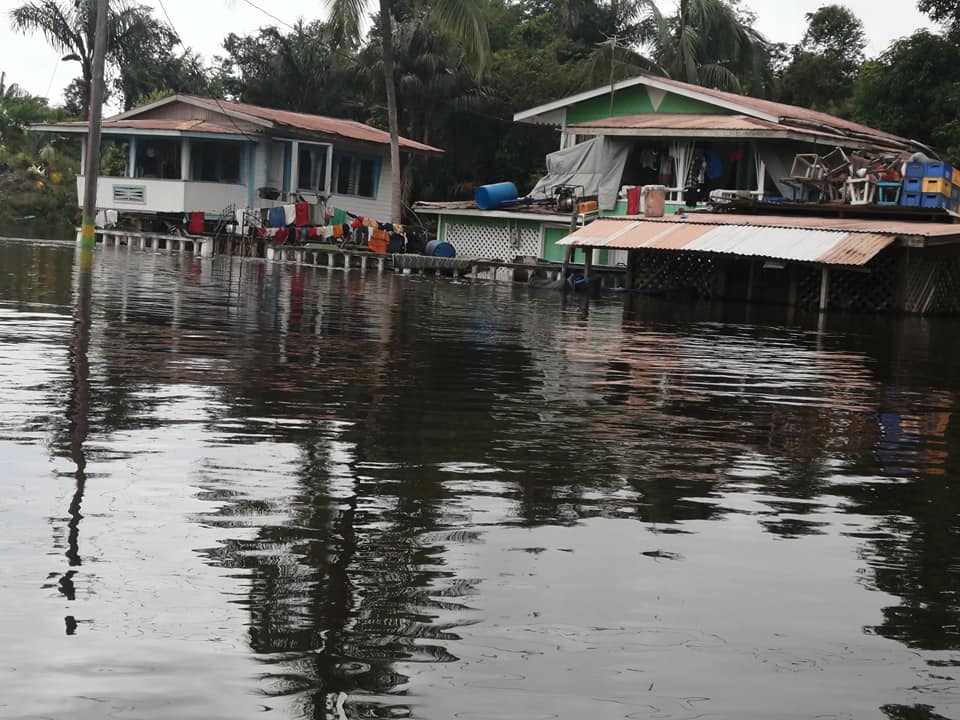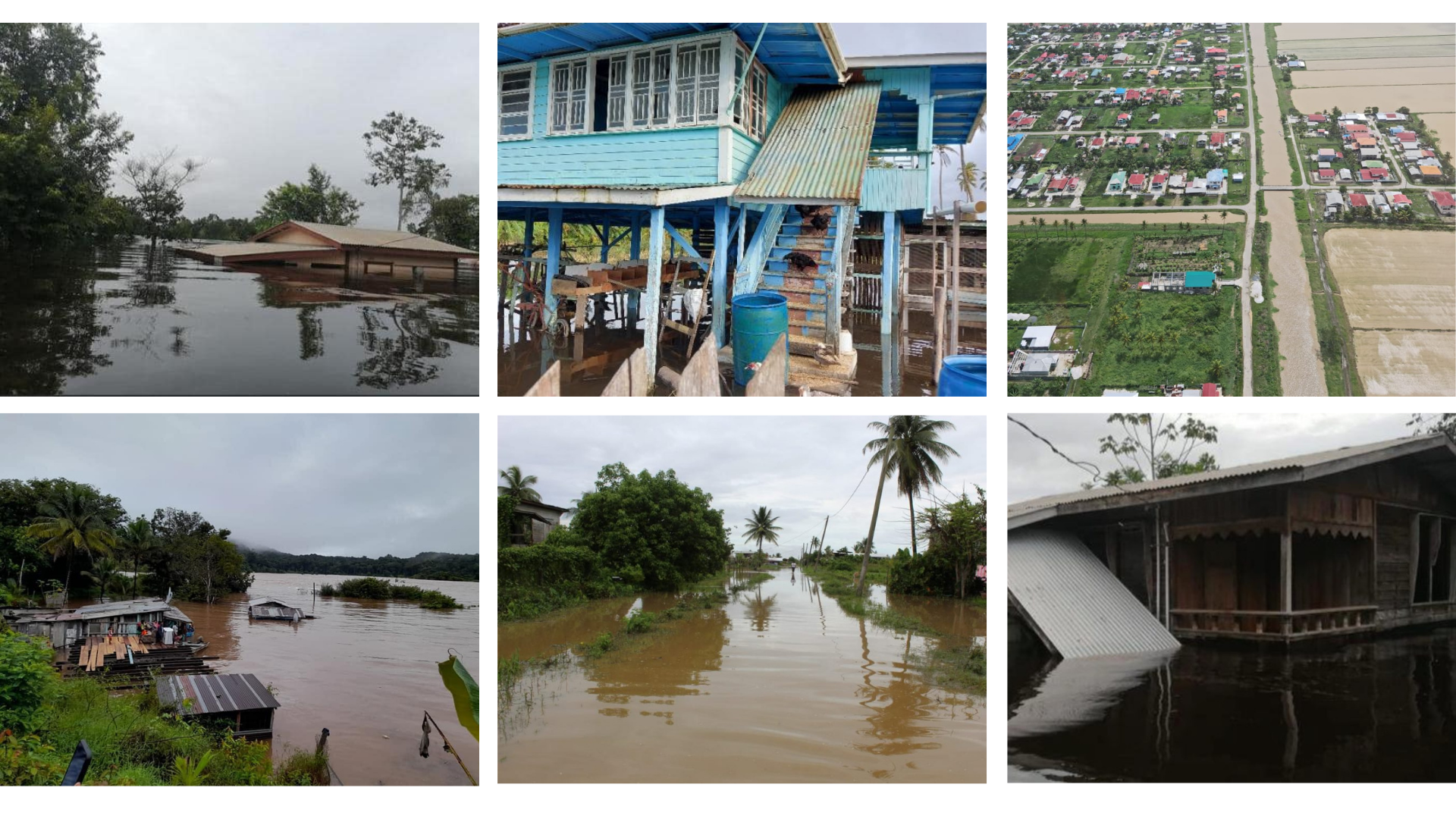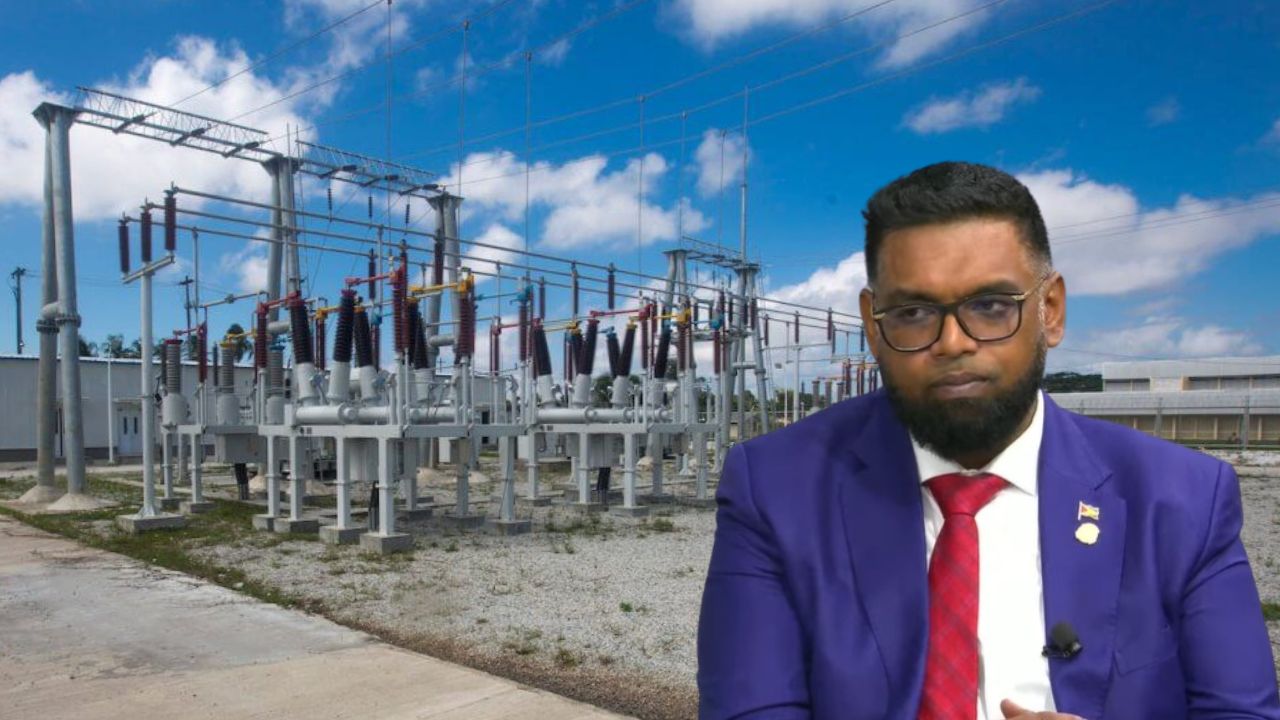By Vishani Ragobeer
In a seven-minute video that has been widely shared on Facebook, an unidentified resident of Kwakwani in Region 10, was in a speedboat travelling on what should have been the waterfront road in that community.
“Watch this, my God, jeez you me. I have never seen this in 60 years of my life in Kwakwani,” she exclaimed, as she continued her journey along the water-covered road.
The sight before her is miles of water, covering buildings, roads and almost everything in sight. The water has risen so high that it has almost entirely covered two-storey buildings.

The situation in Kwakwani is one of the worst in the country, currently. For the past 15 days, however, communities across Guyana have been grappling with varying levels of floodwaters during the May-June rainy season.
As such, Director-General of the Civil Defence Commission (CDC), Lieutenant-Colonel Kester Craig has reported that a total of about 6,900 households in five regions are severely affected by flooding.
During a press conference on Wednesday at the CDC’s headquarters in Thomas Lands, Georgetown, the Director-General related that several teams were dispatched over the past two weeks to conduct rapid assessments and verifications of flood reports nationwide.

Based on those exercises, the CDC has been able to pinpoint which areas have been worse affected and where greater support is needed.
The Director-General provided the following breakdown of those areas where households have been severely affected by flooding:
- Region Two (Pomeroon-Supenaam): over 1,500 households
- Region Three (Essequibo Islands-West Demerara): 600 households
- Region Six (East Berbice- Corentyne): 2,800 households
- Region Nine (Upper Takutu- Upper Essequibo)- 1,000 households
- Region 10 (Upper Demerara- Berbice)- 1,000 households
This means, in total, that about 6,900 households have been severely impacted. Additionally, the Director-General highlighted that people’s crops, livestock and other infrastructure have been damaged.
At Wednesday’s press conference, he could not state what the economic cost of the nationwide flooding has been thus far. Instead, he noted that a socio-economic assessment would be done when the disaster is managed and has ended.
To provide some redress to flood-affected residents, he related that some 6,500 cleaning hampers and about 8,000 food hampers have been distributed across Guyana. In Regions Nine and 10, shelters have been established in schools and public complexes to house those residents displaced by flooding.
“In terms of shelters that have been activated, once water remains in people’s homes and they are displaced, the shelters would have to remain activated until they can return to their homes when things return to normalcy,” the Lieutenant-Colonel emphasised.
But, in Region 10, where about 59 people have already been placed into three shelters in the communities of Kwakwani and Aroaima, Regional Chairman, Deron Adams told the News Room that many more displaced people are seeking refuge with friends and families.
The reason for this, he explained, is because this particular region has had a low vaccination uptake which has resulted in growing concerns about the spread of COVID-19 in the shelters.
Still, the CDC Director-General affirmed that the commission will continue to meet the immediate needs of people. Already, assistance has been sought from the Caribbean Disaster Emergency Management Agency (CDEMA), which is a regional intergovernmental agency for disaster management in the Caribbean. It is expected that some 500 cots will be made available to Guyana from CDEMA.
The Lieutenant-Colonel also said that the CDC will continue to monitor the situation and work along with the regional authorities to help mitigate the flooding woes.






